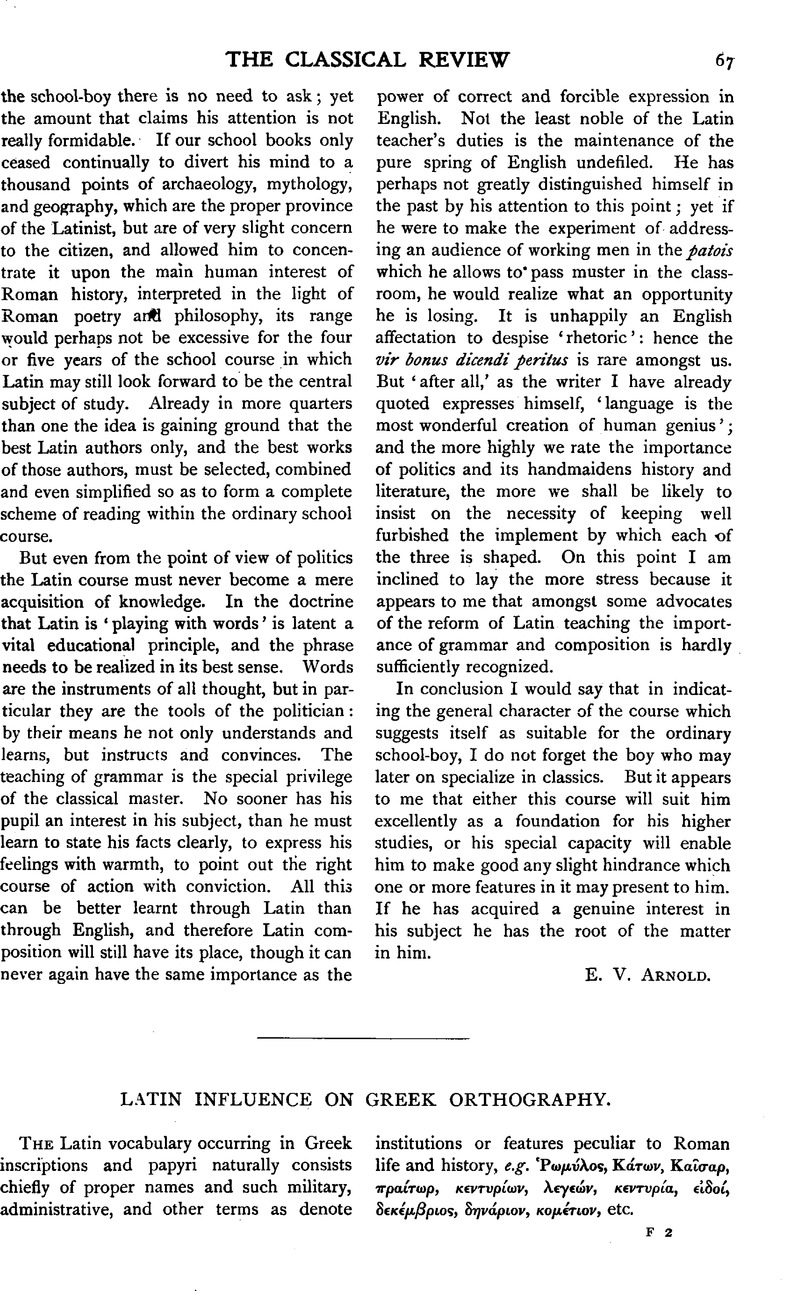No CrossRef data available.
Article contents
Latin Influence on Greek Orthography
Published online by Cambridge University Press: 27 October 2009
Abstract

- Type
- Review Articles
- Information
- Copyright
- Copyright © The Classical Association 1907
References
page 68 note 1 The inscriptional material, carefully collected and conveniently put together in a different sense and for a different purpose, is contained in Th. Eckinger's pamphlet die Orthographic Lateinischer Wörter in Griechischen Inschriften (München, [1892]), to which booklet (141 pp.) I refer once for all in order save time and space and to avoid needless and disturbing repetition by constant reference to the same source.
page 68 note 2 Griechische Urkunden zu Berlin.
page 70 note 1 I remark against Prof. Blass (The Pron. Of Ancient Greek, English trans, p. 35) that if linteum were faithfully rendered by λ⋯ντε∘ν this form would require contraction to λιντ∘⋯ (like κ⋯νε∘ν καν∘⋯ν), and thus become almost irrecognizable.
page 70 note 2 For the converse process, that is to say for the change of Creek u and o during Graeco-Roman times, compare: ![]() (K. Brugmann, Gr. Gram.3 51).
(K. Brugmann, Gr. Gram.3 51).
page 71 note 1 For the converse process of changing Greek υ(= V) into ου during Graeco-Roman times compare: ![]() for
for ![]() for Eὔτυχ∘σ (Blass. Pron. 75), ἱκετε∘νσ⋯σης(Brugmann Gr. Grant. 50).
for Eὔτυχ∘σ (Blass. Pron. 75), ἱκετε∘νσ⋯σης(Brugmann Gr. Grant. 50).
page 72 note 1 Compare Schol. in Dion. Thr. 346, 23(Hilgard): ![]() ; also Quint. Inst. I. 4. IO.: nisi quis putat etiam ex tribus vocalibus syllabam fieri.
; also Quint. Inst. I. 4. IO.: nisi quis putat etiam ex tribus vocalibus syllabam fieri.


